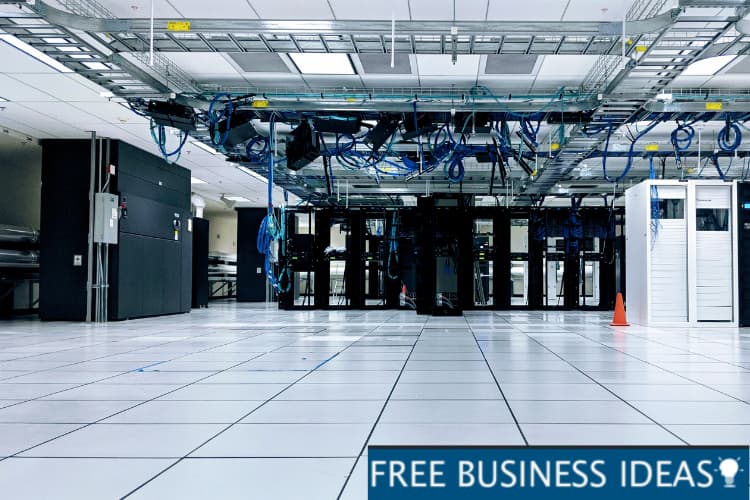Virtual data rooms are spaces used to store information, usually of a secure or privileged nature. They are used for a variety of purposes including data storage, document exchange, file sharing, financial transactions, legal transactions, and more.
In mergers and acquisitions, the electronic data room is a secure and permanently monitored space, which bidders and their advisors can visit to check and report on various issues of provided documents and other data.
Often, a few participants at a time are allowed to bid, and if new documents or new versions of documents are required, they will need to be delivered by hard copy courier. Teams involved in due diligence processes typically need to be brought in from many regions or countries and remain available throughout the process. The dataroom software enables the secure online distribution of sensitive information and reduces the significant cost of physical data rooms.
Read this article to know more information about data rooms.
Securing with a virtual data room
Data leaks occur not only due to the actions of external or internal intruders. Their cause is often the transfer of documents to external counterparties through private accounts of public cloud platforms. Even sending by email can be insecure as the information goes to the public network and the company loses control over it.
A virtual data room service is storage hosted in a private cloud or within a secure perimeter of an organization. Its main task is to provide authorized users with access to documents through a web interface or special applications. The traffic between the client and the storage is mandatory encrypted, and in some cases, DRM functions can be implemented – a digital restrictions management system.
Then the documents themselves are encrypted. Typically, VDR is used to complete large corporate transactions, provide access to company reporting during an audit, transfer information to investors, as well as in other situations when it is necessary to give business-critical data to the side.
To send files, the user uploads them to the storage, sets up access, and sends a link to the recipient. The process can be automated since many developers implement integration with file managers, email programs, instant messengers, and other popular software in client applications.
In this case, the process of downloading and sending looks a little more complicated than attaching an attachment to an email. If the documents are protected using DRM technologies, the recipient will have to install special agent software on the computer that controls the correctness of their use. In this case, there are more control options, but not all types of data can be protected with DRM.
The secure data room provides an increased level of protection for documents hosted in the storage based on centrally managed policies. Access to them can be obtained only after authentication (most often two-factor), while the rights are configured much more flexibly than in public cloud services.
VDR allows, for example, to allow viewing a document (and in some cases, parts of it) in a browser, but prohibits downloading. Data room services provide protection against attacks, and access permission can be revoked or granted for a limited period of time. At the same time, the client software will control the deletion of documents on the users’ side and block the download of files placed in the repository.
Which business fields VDRs are perfect for?
The range of potential customers should not be limited to individual industries. First of all, virtual data rooms are needed by financial companies, construction, and engineering organizations, law firms, as well as communication service providers, and retailers.
They often work with critical information and need the means to securely send documents to external counterparties or remote branch offices. Such customers require the ability to flexibly configure document access rights, manage their life cycle, and even protect them using DRM technologies.
In the telecom and financial sector, the means of protecting user data and marking documents must comply with the requirements of regulators – this is another reason for choosing a specialized solution. In retail, merchandisers and sales agents have to give access to trade secret documents. Moreover, viewing documents on mobile devices and deleting them in case of dismissal of an employee also needs to be controlled.
Sharing data using virtual data rooms: the most common ways of use
Businesses often work with one another to produce and manufacture products, during the construction of a building, and to offer services. Forming and maintaining these business relationships requires contracts and the frequent transmission of data.
Virtual data rooms provide for the storage of these contracts and make readily available documents needed for the continuance of business partnerships. As an example, changes made to the blueprints of a structure by an engineer are immediately available to all contractors involved in the project.
Mergers and acquisitions (M&A) procedures are the most common use of VDRs. These repositories provide a place for the due diligence needed during the finalization of the deal. Such business transactions involve large amounts of documents, many of which are confidential and contain sensitive information. Using a VDR is a safe and reliable way for all interested parties to review and exchange data that is engaged in negotiations. Visit https://www.idealsvdr.com/data-room-due-diligence/ to read more about data room solutions for due diligence.
Consumer-grade file synchronization and sharing solutions, such as Dropbox, are convenient options for many users and generally work as intended. However, recent security breaches in such file-sharing services result in breaches of privacy or the inability to find data when it is needed. Such solutions lack tools for monitoring, tracking, auditing, and other important features.
When business owners need to quickly share information, they often turn to consumer file-sharing platforms that do not meet corporate security and compliance requirements. But there is an easy and convenient way to securely exchange documentation in a certain business environment that allows seamless access to the files across all devices and collaboration with colleagues, customers, and partners even beyond the corporate firewall.
